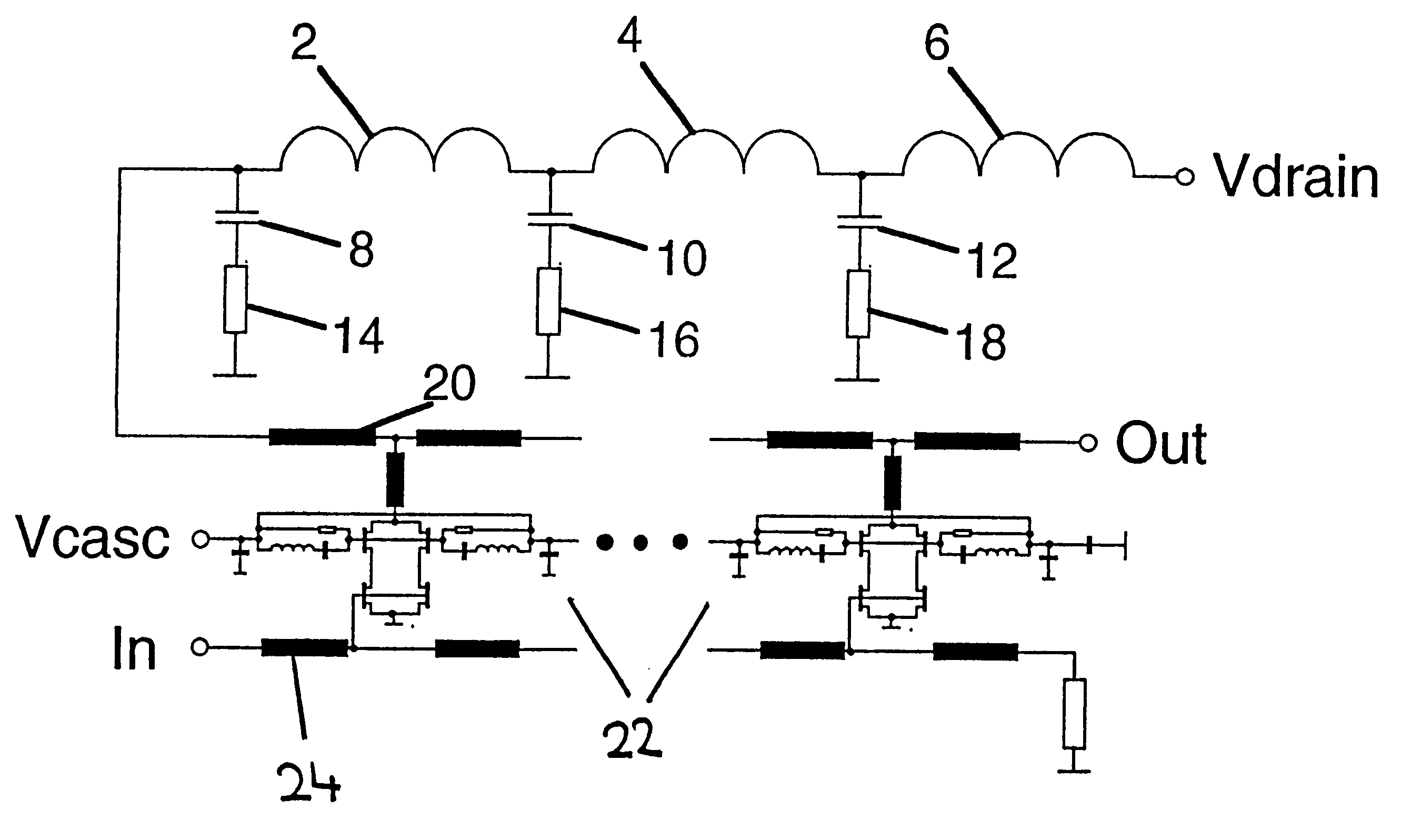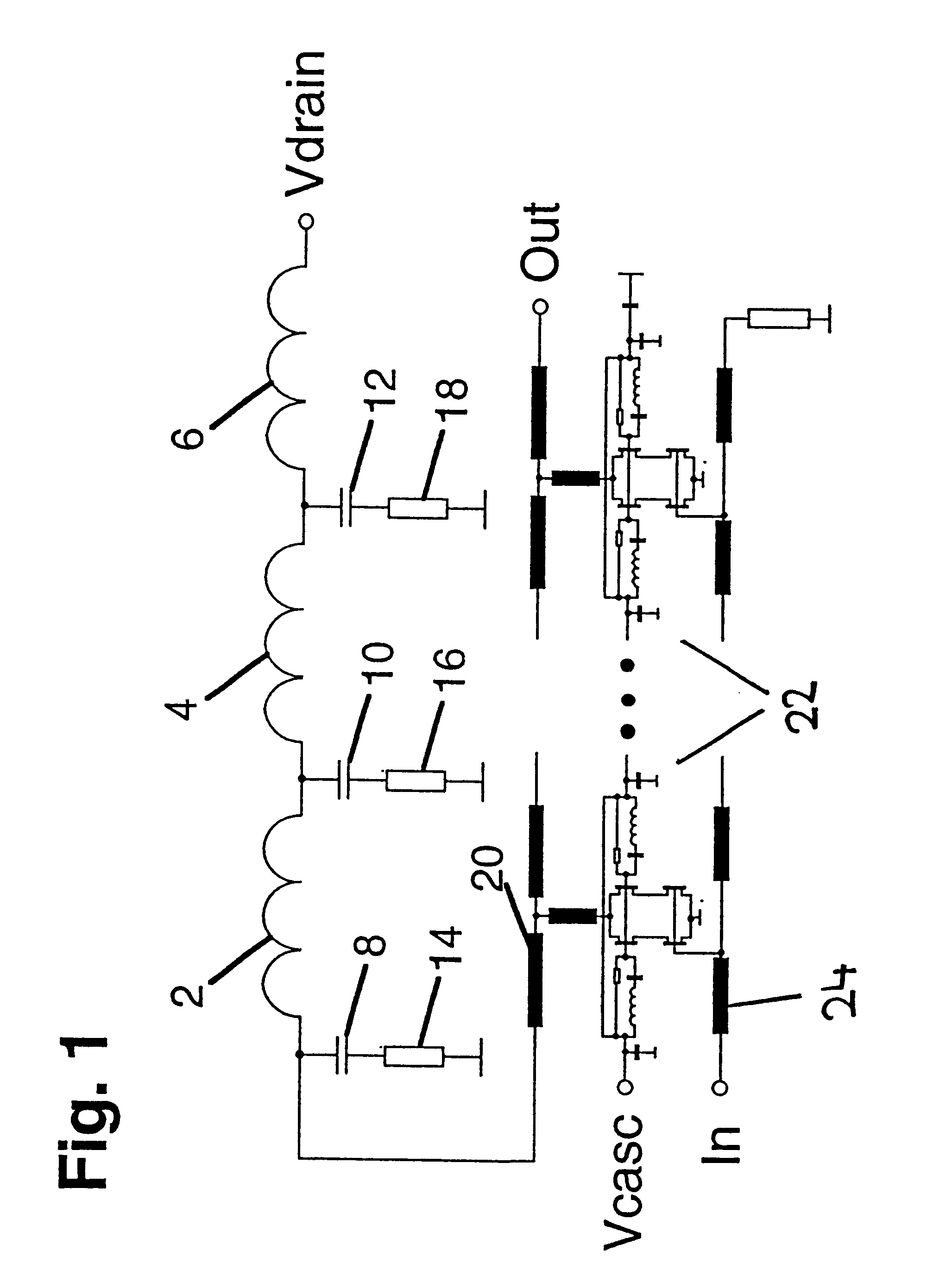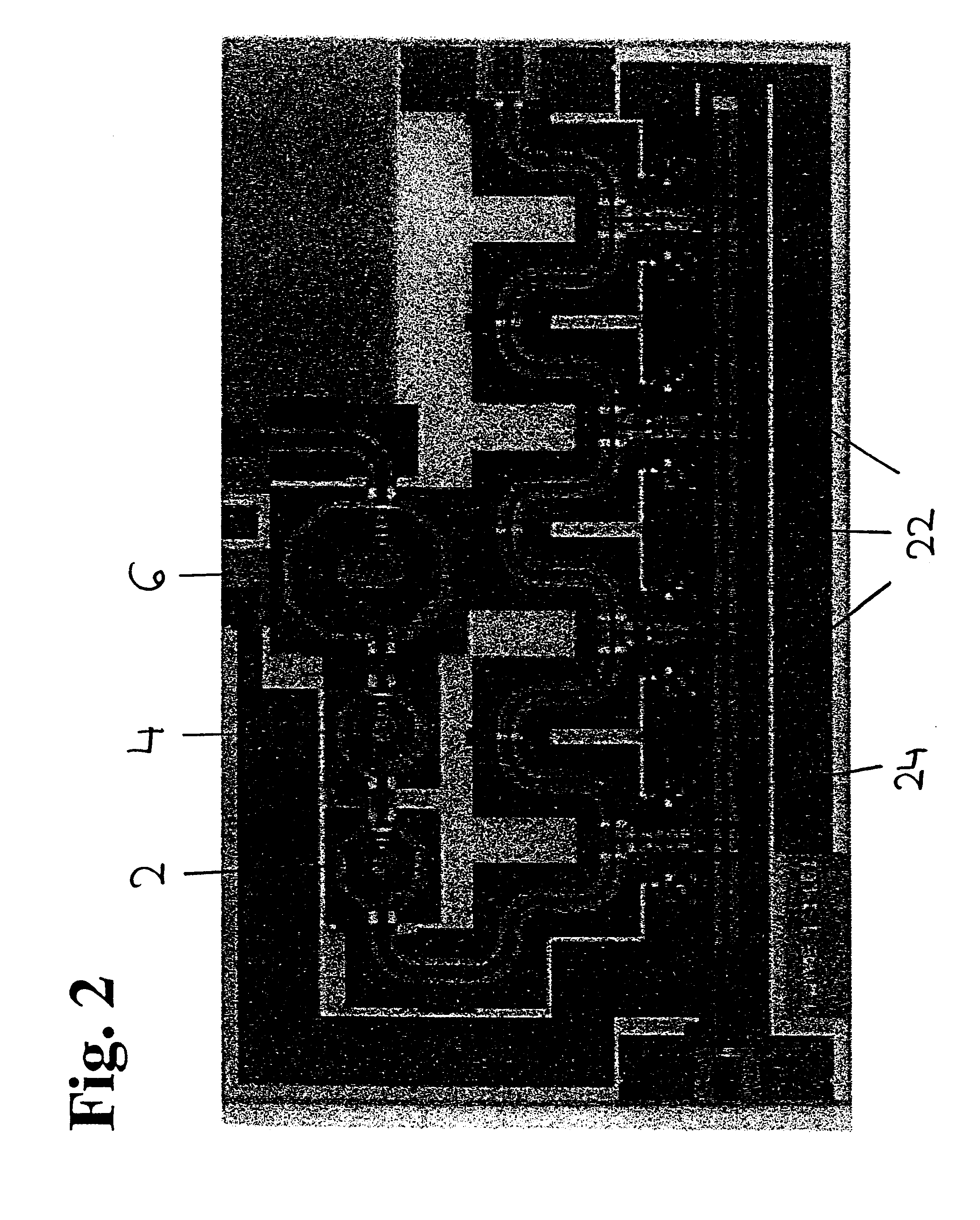Supply voltage decoupling device for HF amplifier circuits
a technology of supply voltage and amplifier circuit, which is applied in the direction of amplifiers, amplifiers with field-effect devices, electric devices, etc., can solve the problems of small power loss due to applied supply voltage, and achieve the effects of avoiding current supply to the amplifier, small power loss, and higher power loss
- Summary
- Abstract
- Description
- Claims
- Application Information
AI Technical Summary
Benefits of technology
Problems solved by technology
Method used
Image
Examples
Embodiment Construction
FIG. 1 shows one embodiment of a connection diagram of a distributed amplifier and of the present device for decoupling the supply voltage. The illustrated distributed amplifier is described in more details in the publication by M. Leich et al., "40 GBit / s High Voltage Modulator Driver in P-HEMT Technology", in: Electronics Letters, vol. 35, No. 21, pages 1842 to 1844. Such a distributed amplifier may, for instance, be structured in four sections whereof the figure illustrates only two. This amplifier can be realised in a GaAs P-HEMT-technology and offers a high amplification factor over a wide frequency range. As far as details are concerned reference is made to the aforementioned document.
The distributed amplifier 22 is connected to an output line 20 via which the amplified signals are coupled out at one end (Out). The inventive device is connected to the opposite end of the output line 20, which is not envisaged for coupling out the amplified signals. In the present example, the ...
PUM
 Login to View More
Login to View More Abstract
Description
Claims
Application Information
 Login to View More
Login to View More - R&D
- Intellectual Property
- Life Sciences
- Materials
- Tech Scout
- Unparalleled Data Quality
- Higher Quality Content
- 60% Fewer Hallucinations
Browse by: Latest US Patents, China's latest patents, Technical Efficacy Thesaurus, Application Domain, Technology Topic, Popular Technical Reports.
© 2025 PatSnap. All rights reserved.Legal|Privacy policy|Modern Slavery Act Transparency Statement|Sitemap|About US| Contact US: help@patsnap.com



